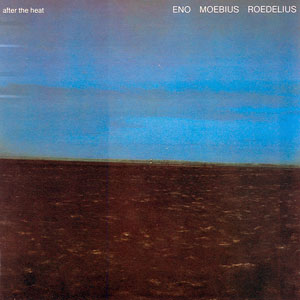 W
WAfter the Heat is a 1978 album by Brian Eno, Dieter Moebius and Hans-Joachim Roedelius, credited to "Eno Moebius Roedelius". The album represents the second collaboration by the trio, the first being 1977's Cluster & Eno. As with the previous album, After the Heat was created in collaboration with the influential krautrock producer Conny Plank.
 W
WAmbient 1: Music for Airports is the sixth studio album by English musician Brian Eno, released in 1978 by Polydor Records. The album consists of four compositions created by layering tape loops of differing lengths, and was designed to be continuously looped as a sound installation, with the intent of defusing the tense, anxious atmosphere of an airport terminal.
 W
WAmbient 2: The Plateaux of Mirror is a 1980 album by Harold Budd and Brian Eno. This is the second installment of Eno's Ambient series, which began in 1978 with Ambient 1: Music for Airports, identifiable by its similar cover art which evokes rural terrain on a map.
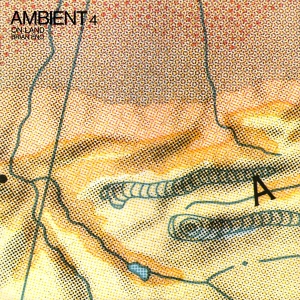 W
WAmbient 4: On Land is the eighth solo studio album by British ambient musician Brian Eno. It was the final edition in Eno's ambient series, which began in 1978 with Music for Airports.
 W
WAnother Day on Earth is the twenty-third solo studio album by Brian Eno, released in June 2005 on Hannibal Records.
 W
WAnother Green World is the third studio album by English musician Brian Eno, released by Island Records in September 1975. Produced by Eno and Rhett Davies, it features contributions from a small core of musicians including Robert Fripp (guitar), Phil Collins (drums), Percy Jones, and Rod Melvin (piano). John Cale plays viola on two tracks.
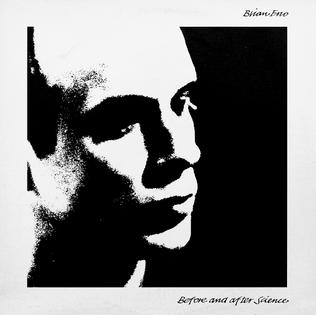 W
WBefore and After Science is the fifth studio album by British musician Brian Eno. Produced by Eno and Rhett Davies, it was originally released by Polydor Records in December 1977 in the United Kingdom and by U.S. Island soon after. Musicians from the U.K. and Germany collaborated on the album, including Fred Frith of Henry Cow, Phil Manzanera of Roxy Music, Paul Rudolph of Hawkwind, Andy Fraser of Free, Dave Mattacks of Fairport Convention, Jaki Liebezeit of Can, and Dieter Moebius and Roedelius of Cluster. Over one hundred tracks were written with only ten making the album's final cut. The musical styles of the album range from energetic and jagged to languid and pastoral.
 W
WBeyond Even (1992–2006) is a 2007 double disc ambient album by British musicians Robert Fripp and Brian Eno. It was first released on the Discipline Global Mobile website as a digital download, entitled The Cotswold Gnomes, on 23 October 2006.
 W
WCluster & Eno is a collaborative album by German electronic music group Cluster and English ambient musician Brian Eno. The style of this album is a collection of gentle melodies: a mixture of Eno's ambient sensibilities and Cluster's avant-garde style.
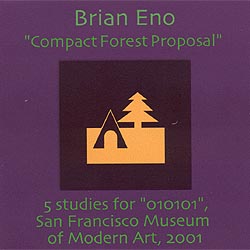 W
WCompact Forest Proposal : 5 Studies for "010101", San Francisco Museum of Modern Art, 2001 is the twenty-first solo studio album from British musician Brian Eno, released in Feb. 2001.
 W
WDiscreet Music (1975) is the fourth studio album by the British musician Brian Eno, and the first released under his full name. The album is a minimalist work featuring synthesizer and tape delay. The A-side consists of one 30-minute piece, while the B-side features three variations on Canon in D Major by Johann Pachelbel, performed by the Cockpit Ensemble and conducted by Gavin Bryars.
 W
WDrawn from Life is a 2001 music album by the British ambient musician Brian Eno and the German composer J. Peter Schwalm.
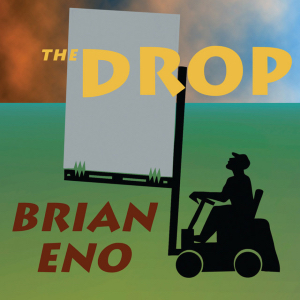 W
WThe Drop is the fifteenth solo studio album by British musician Brian Eno, released on 7 July 1997 through All Saints Records. The album continues in the same style as much of his work of the period exploring impressionistic, ambient instrumental soundscapes rather than more conventional songwriting. The 2014 reissue includes the 77 Million Paintings album as a bonus disc and edits the track "Iced World" from its original 32 minutes down to 18 minutes – the same duration on both vinyl and CD.
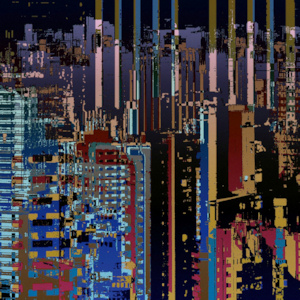 W
WDrums Between the Bells is a collaboration album by Brian Eno and poet Rick Holland. It was released on 4 July 2011 on Warp Records in CD, double CD 'hardback', double vinyl and download editions. "Glitch" was released in advance of the album, through Eno's mailing list in April 2011.
 W
WThe Equatorial Stars is the third studio album by British ambient duo Robert Fripp and Brian Eno. The album was released in 2004, which marked almost 30 years since the two musicians had collaborated on their second album, Evening Star, in 1975.
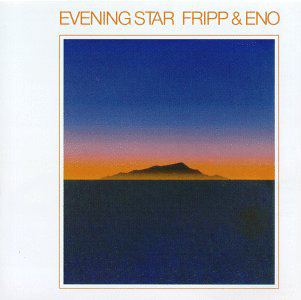 W
WEvening Star is the second studio album by British musicians Robert Fripp and Brian Eno. It was recorded from 1974 to 1975 and released in December 1975 by Island Records.
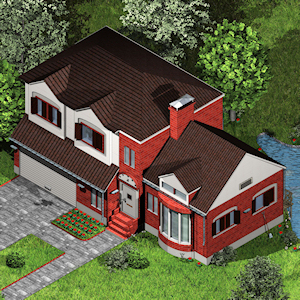 W
WEverything That Happens Will Happen Today is the second collaborative studio album by David Byrne and Brian Eno, released on August 18, 2008, by Todo Mundo. Marking Byrne's eighth studio effort overall and Byrne and Eno's first joint project in nearly 30 years, the album explores themes of humanity versus technology and optimism in spite of bleak circumstance through the blending of electronic and gospel music. Critical reception was largely positive and the album received awards for both the musical content as well as the packaging and technical production.
 W
WExtracts from Music for White Cube, London 1997 is the sixteenth solo studio album from British musician Brian Eno, released in 1997.
 W
WFourth World, Vol. 1: Possible Musics is an album by Jon Hassell and Brian Eno. It was recorded at Celestial Sounds in New York City and released in 1980 by Editions EG, an imprint label of E.G. Records. "Fourth world music" is a musical aesthetic described by Hassell as "a unified primitive/futuristic sound combining features of world ethnic styles with advanced electronic techniques." Upon its release, the album received praise from a variety of critics.
 W
WHere Come the Warm Jets is the debut solo album by British musician Brian Eno, released on Island Records in January 1974. It was recorded and produced by Eno following his departure from the band Roxy Music, and blends glam and pop stylings with avant-garde approaches. The album features numerous guests, including three of Eno's former Roxy bandmates, drummer Simon King, bassist Bill MacCormick, guitarist/bassist Paul Rudolph and guitarist Robert Fripp and bassist John Wetton. Notable contributions were also made by guitarist Chris Spedding, bassist Busta Jones and gospel vocal group Sweetfeed. In developing the material with the various musicians, Eno devised unusual methods and instructions to obtain unexpected results.
 W
WHigh Life is the second collaboration between Brian Eno and Karl Hyde, of British electronic group Underworld. The album follows Someday World and was released on 30 June 2014.
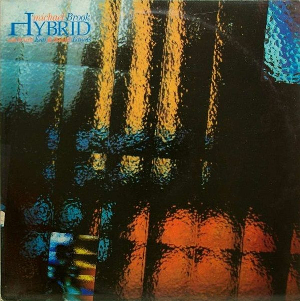 W
WHybrid is an album by Michael Brook, with Brian Eno and Daniel Lanois. A specialist in timbre and texture, Brook pioneered the infinite guitar—a guitar outfitted with a feedback transducer to produce non-decaying sustain of any note—which makes its first notable appearance on this album.
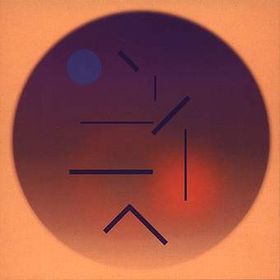 W
WI Dormienti is the seventeenth solo studio album from British musician Brian Eno, released in 1999. It is also the title of an art-book by Eno and Italian artist Mimmo Paladino, released in 2000, packaged with a copy of the album and featuring pictures & sketches of the Roundhouse Installation.
 W
WJanuary 07003: Bell Studies for the Clock of the Long Now is the twenty-second solo studio album by British musician Brian Eno, released in 2003.
 W
WKite Stories is the nineteenth solo studio album from British musician Brian Eno, released in 1999.
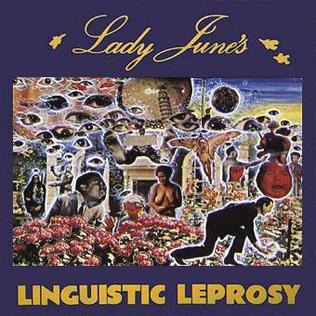 W
WLady June's Linguistic Leprosy is an experimental music/spoken word album by poet Lady June. It features musical contributions by Kevin Ayers and Brian Eno.
 W
WLightness: Music for the Marble Palace – The State Russian Museum, St. Petersburg is the eighteenth solo studio album from British musician Brian Eno, released in 1997, and re-released in 2000.
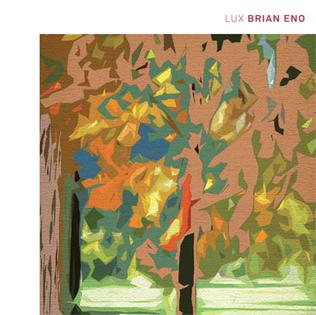 W
WLux is the twenty-fourth solo studio album from Brian Eno, released through Warp on 13 November 2012. The album is a collection of ambient soundscapes that have been installed in art galleries and airport terminals. Critical reception has positively compared it with Eno's previous ambient work and noted that it is both relaxing as well as challenging music for those who engage it critically. In 2013, Brian Eno created a number of limited edition prints featuring the cover artwork from Lux made available only from his website.
 W
WThe discography of English electronic musician, music theorist and record producer Brian Eno consists of 28 solo studio albums, 37 collaborative studio albums, 14 compilation albums, eight video albums, and nine singles.
 W
WMixing Colors is a collaborative studio album by English brothers Roger Eno and Brian Eno. It was released on 20 March 2020 under Deutsche Grammophon.
 W
WMore Music for Films is a compilation album by British musician Brian Eno, released in 2005.
 W
WMusic for Civic Recovery Centre is the twentieth solo studio album from British musician Brian Eno, released in 2000.
 W
WMusic for Films is the seventh solo studio album by British musician Brian Eno. It is a conceptual work intended as a soundtrack for imaginary films, although many of the pieces had already appeared in actual films.
 W
WMusic for Films III is the third entry in Brian Eno's "Music for Films" series. It features tracks by Brian Eno, Roger Eno, Michael Brook, and Harold Budd among others.
 W
WMy Life in the Bush of Ghosts is a studio album by Brian Eno and David Byrne, released in February 1981. It was Byrne's first album without his band Talking Heads. The album integrates sampled vocals and found sounds, African and Middle Eastern rhythms, and electronic music techniques. It was recorded prior to Eno and Byrne's work on Talking Heads' 1980 album Remain in Light, but problems clearing samples delayed its release by several months.
 W
WNeroli is the fourteenth solo studio album by British musician Brian Eno, released in 1993.
 W
WNerve Net is the twelfth solo studio album by British musician Brian Eno. It marked a return to more rock-oriented material, mixed with heavily syncopated rhythms, experimental electronic compositions and occasional elements of jazz. The ambient sensibility is still present on several tracks, though it is often darker and moodier than the pieces Eno is best known for.
 W
W(No Pussyfooting) is the debut studio album by the British duo Fripp & Eno, released in 1973. (No Pussyfooting) was the first of three major collaborations between the musicians, growing out of Brian Eno's early tape delay looping experiments and Robert Fripp's "Frippertronics" electric guitar technique.
 W
WOriginal Soundtracks 1 is a studio album recorded by rock band U2 and Brian Eno under the pseudonym Passengers as a side project. Released on 6 November 1995, the album is a collection of songs written for mostly imaginary films. Owing to Eno's involvement as a full songwriting partner and the album's experimental nature, the moniker "Passengers" was chosen to distinguish it from U2's conventional albums. It was commercially unnoticed by the band's standards and received generally mixed reviews. Guest musicians on the record included Italian opera singer Luciano Pavarotti and producer Howie B, who would co-produce U2's following album, Pop (1997).
 W
WThe discography of English electronic musician, music theorist and record producer Brian Eno consists of 28 solo studio albums, 37 collaborative studio albums, 14 compilation albums, eight video albums, and nine singles.
 W
WThe Pearl is an album by ambient musicians Harold Budd and Brian Eno, which was released in 1984. This album is similar to Budd and Eno's previous collaboration Ambient 2: The Plateaux of Mirror, consisting mostly of subtly treated piano textures, but this time with more pronounced electronic treatments and nature recordings. This album was produced with Daniel Lanois, who is also credited on the front cover.
 W
WReflection is the twenty-sixth studio album by English musician Brian Eno, released on 1 January 2017 on Warp Records. It is a piece of generative ambient music produced by Eno, which plays indefinitely via an app, modulating its output at different times of the day. A pre-recorded version of the album is available on CD and vinyl, which runs for 54 minutes. Digital streaming versions of the album update on a seasonal basis. It was nominated for the 2017 Grammy Award for Best New Age Album.
 W
WThe Ship is the twenty-fifth solo studio album by English musician Brian Eno, released on 29 April 2016 on Warp Records. It was announced on Eno's website on 24 February 2016. The album is Eno's first solo album to contain vocals since 2005's Another Day on Earth. The Ship debuted at number 28 on the UK Albums Chart and is the second highest-charting solo album of Eno's solo career The album received critical acclaim.
 W
WThe Shutov Assembly is the thirteenth solo studio album by British musician Brian Eno, released on 10 November 1992 on Warner. One of Eno's ambient albums, it was reissued in 2014 with a second disc with bonus tracks.
 W
WSmall Craft on a Milk Sea is a 2010 album by British musician and record producer Brian Eno. The album—his debut with Warp—was released in Japan on 19 October 2010, in the United States on 2 November, and the United Kingdom on 15 November. The album was recorded with collaborators Jon Hopkins and Leo Abrahams in 2009 and 2010 and was released in several formats, including Compact Disc; digital download; a box set featuring the album on Compact Disc, vinyl, and download, a bonus CD with four extra tracks, and a lithograph by Eno; and another box set with all of the previous media and a 12" square silkscreen print by Eno and a copper plate.
 W
WSomeday World is a collaboration album by British musician Brian Eno and Karl Hyde, of British electronic group Underworld, released on 5 May 2014. The album features a number of supporting musicians, including Coldplay's Will Champion, John Reynolds and Andy Mackay of Roxy Music, and was produced by Brian Eno with 20-year-old Fred Gibson.
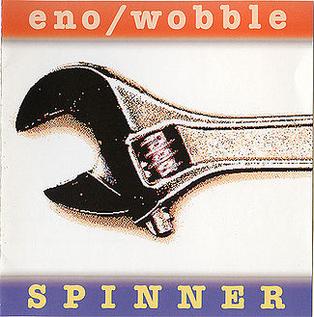 W
WSpinner is an instrumental album by British musicians Brian Eno and Jah Wobble, released in 1995.
 W
WTaking Tiger Mountain is the second solo album by English musician Brian Eno, released in November 1974 by Island Records. Unlike his debut album Here Come the Warm Jets, which had featured sixteen musicians, this album utilized a core band of five instrumentalists – Eno himself on keyboards and guitar, guitarist Phil Manzanera, bassist Brian Turrington, drummer Freddie Smith and percussionist Robert Wyatt – and featured far fewer guests. Manzanera, who had played with Eno in Roxy Music, also participated in the writing and production. To help guide the musicians, Eno and Peter Schmidt developed instruction cards called Oblique Strategies to facilitate creativity during the recording process.
 W
WTextures is a 1989 album by the British musician Brian Eno consisting of edited and unedited ambient music, produced exclusively for licensed use in television programs and films. The album was not commercially released to the public.
 W
WThursday Afternoon is the eleventh solo studio album by British ambient musician Brian Eno consisting of one 60-minute eponymous composition. It is the rearranged soundtrack to an 80-minute video production of the same title made in 1984.
 W
WWah Wah is the sixth studio album by the Manchester-based English indie rock band James. After the success of their fourth album, Seven (1992), the band entered Real World Studios, Box, Wiltshire, to record their fifth album Laid in early 1993 with producer Brian Eno, with whom the group had longed to work. Prior to recording Laid, Eno observed the band's jam sessions at their Manchester rehearsal room, and considered these improvised pieces to be as important to the band's music as their eventually crafted songs. He requested to the group that whilst they were recording Laid, they would also concurrently record an album of their improvisations which Eno and, by Eno's request, second producer Markus Dravs would produce in a secondary studio in the Real World complex. Each composition started off with the band's improvisation being recorded, which Dravs would then edit, generally alone whilst James and Eno were recording Laid. Eno and Dravs would take a "promising" part of a recording and then mixed them only once. Tim Booth's desire to re-record some of his vocals caused friction in the studio.
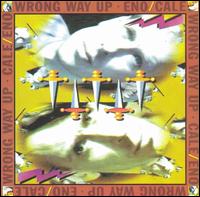 W
WWrong Way Up is a 1990 album by Brian Eno and John Cale.